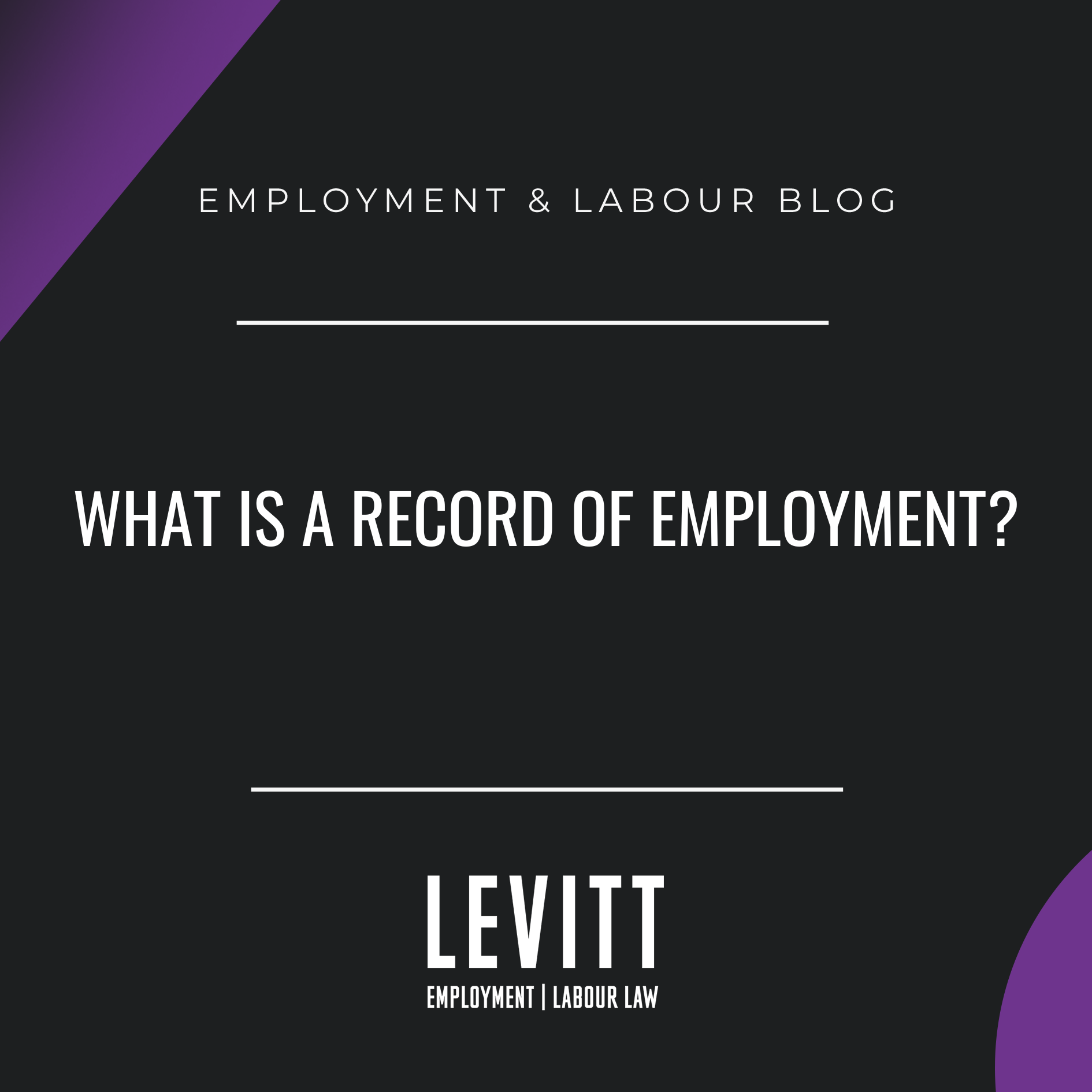What is a Record of Employment?
A Record of Employment (ROE) provides information on your employment history. It is an incredibly important document that is used by employees when they apply for Employment Insurance (EI) benefits.
Your ROE is used by Service Canada to determine whether you are eligible to receive Employment Insurance (EI) benefits and leave.
The information on the ROE is also used to determine what the benefit amount will be, how long the benefits will be paid for, and to ensure that EI funds are not misused or received in error.
Your employer is required to issue an ROE every time you may experience an interruption of earnings or if Service Canada requests one. If your employer didn’t issue your ROE, you should contact our firm immediately.
What is an interruption of earnings?
An interruption of earnings occurs in two situations.
The first is when an employee has had or is anticipated to have 7 consecutive calendar days with no work and no insurable earnings from the employer. This “7-day rule” typically applies when an employee quits their job, is laid off, or when their employment is terminated.
The second situation occurs when an employee’s salary falls below 60% of regular weekly earnings, and there is a separation from employment due to injury or quarantine (i.e. sick leave), pregnancy or maternity leave, parental leave, or family responsibility leave. In this situation, the first day of the interruption of earnings is the Sunday of the week when your earnings fall below the 60% threshold.
How do I get my Record of Employment?
If your employer issues paper ROEs, then you will receive one directly from your employer.
If your employer issues electronic ROEs, you can access the electronic copies online through your My Service Canada Account, which also allows you to update and view your information for Employment Insurance, the Canada Pension Plan, Canada Pension Plan disability, and Old Age Security.
How do I provide a Record of Employment?
If you are an employer who issues ROEs on paper, you must contact Employment and Social Development Canada’s Employer Contact Centre to order paper ROE forms. When you fill out the paper ROE form, you will have 3 copies.
- Give the original copy to the employee as proof of insurable earnings so they can claim EI benefits;
- Send the 2nd copy (blue) to Service Canada as indicated on the form; and
- Keep the 3rd copy (white) in your files for 6 years.
Paper ROE forms must be ordered through Employment and Social Development Canada’s Employer Contact Centre.
If you are an employer who issues ROEs electronically, you can do so online using Record of Employment on the Web (ROE Web). Your organization’s Primary Officer, or other representatives, will be able to issue ROEs electronically through ROW Web.
What is the deadline for issuing an ROE?
There are understandably strict deadlines for when you must issue ROEs.
If you issue ROEs on paper, they must be issued within 5 calendar days of either the first day of an interruption of earnings or the day you become aware of an interruption of earnings.
If you issue ROEs electronically, the deadline depends on what type of pay period you use, and when during the pay period the interruption of earnings occurs.
If you use a weekly, biweekly (every 2 weeks), or semi-monthly (twice a month) pay period, you have 5 calendar days after the end of the pay period to issue the ROE.
If you use a monthly pay period, of have 13 pay periods per year (every 4 weeks), then the possible deadlines are 5 calendar days after the end of the pay period when an employee experiences an interruption of earnings, or 15 calendar days after the first day of an interruption of earnings.
You must issue ROEs by whichever deadline is sooner. If you fail to do so, you could be fined up to $2000 or imprisoned for up to six months, or both.

